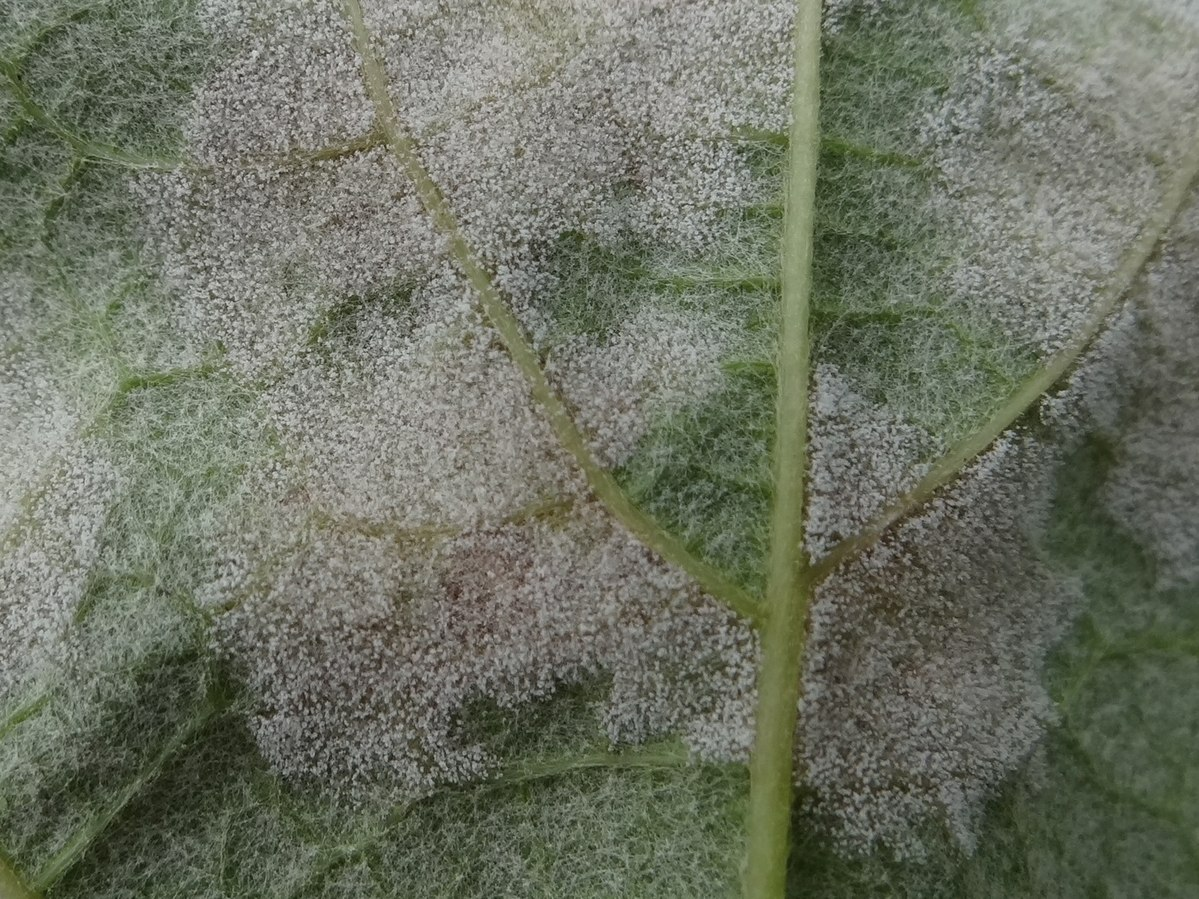Downy mildew
How to get rid of the desease
Downy mildew spreads in damp and cold weather. Yellowish-brown spots are visible on the upper side of the leaf, whitish fungal mycelium on the underside.
Genereal information
Downy mildew comprises several genera of fungi that belong to the group of oomycetes. The various species form the order Peronosporales. Important representatives of this group are downy mildew on grapes (Plasmopara viticola) and lettuce (Bremia lactucae). Many species of downy mildew are host-specific and therefore strongly dependent on their respective plant species.
Affected plants
- Affected vegetables: radishes, radishes, horseradish, lettuce, peas, lamb's lettuce, cabbage, spinach, onions
- Affected woody plants: roses, vines
- Affected ornamental plants: Carnations, pansies, primroses
Characteristics

-
Downy mildew is known as a "bad weather fungus" because it normally occurs in damp, cool weather. Therefore, infestation occurs mainly in spring or fall. Cool, rainy summers also provide good conditions for downy mildew. This is because the spores of the fungus use water as a means of spreading. If the leaves do not dry quickly enough, the spores can be transported in the water film and enter the stomata of the leaves - in contrast to true mildew, the fungus of downy mildew penetrates the plant tissue. This can occur through wounds or the natural respiratory openings of the leaves (stomata)
-
Overwintering in fallen leaves or in crop residues. If in doubt, dispose of all plant residues (not in compost) so that re-infection is made more difficult the following year
-
Recognizable by yellowish to brown spots on the upper leaf surfaces, sometimes also on the stem or flower. Grey to greyish-purple fungal tissue can be seen on the underside of the leaves.
Prevention and treatment
- Keep leaves dry, as the fungus is transmitted by water. (roofing, spacing for good aeration)
- water from below to reduce the risk of transmission
- avoid nitrogen fertilization
- choose resistant and tolerant varieties
- spray with garlic tea in bad weather, which has an antifungal effect (for production, see Powdery mildew control)
- spray with horsetail broth to strengthen plants (see Preventing powdery mildew) spray with horsetail broth to strengthen plants (see preventing powdery mildew)
- remove affected plant parts
- water with nettle slurry to strengthen plants.
Christian Hummert (Ixitixel), CC BY-SA 3.0 https://creativecommons.org/licenses/by-sa/3.0, via Wikimedia Commons

